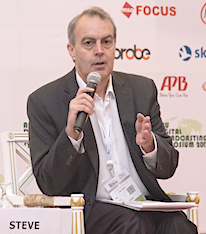Analysis from Steve Ahern
There is a big difference between social media platforms and responsible media.
That difference is proactive editorial oversight.
This has been sharply exemplified by the tragic New Zealand shootings.
Responsible television and radio broadcasters and newspaper publishers saw the live feed of the murderer’s shooting rampage and agonised whether or how much to publish. Most didn’t publish any. Those who did publish stills, did so in a restrained manner, after much soul searching.
In contrast, there was no proactive editorial decision making process in advance of publishing the killer’s live feed. He connected his head cam, pressed ‘start live video’ and was on air.
The Association of New Zealand Advertisers’ Chief Executive Lindsay Mouat “recognises social media provides many community and social benefits,” but says that “comes with responsibilities to effectively moderate” social media content. He said:
“The events in Christchurch raise the question, if the site owners can target consumers with advertising in microseconds, why can’t the same technology be applied to prevent this kind of content being streamed live?”
It’s a good question. Social media platforms generally make two claims when challenged: (1) the technology is not advanced enough to stop everything, and (2) ‘we are a platform not a publisher’ so are not bound by the same rules as responsible media.
Mouat has rightly called them out on the first point.
Australia’s broadcast regulator, the ACMA, and others such as the Australian Press Council and several government departments are thinking about the second point.
The ACMA has launched a formal investigation into broadcast coverage of the shooting, under section 170 of the Broadcasting Services Act 1992 and against applicable broadcasting codes of practice.
But the ACMA has only limited jurisdiction.
Online streaming of the footage is currently beyond the ACMA’s regulatory remit, but if broadcasters shared that footage on their own websites, then the ACMA may have some jurisdiction. Ironically, the ACMA could not take action against the original social media platform, but could take action against broadcasters for republishing that same content on air or on their websites.
The ACMA and the Press Council are “working closely” on this issue together according to our sources, which is good because it deserves a coordinated real world response, not just a legalistic or bureaucratic one.
The ACMA has no power to regulate social media platforms because they are not legally defined as broadcasters so cannot be subject to the Broadcasting Services Act. The ACMA addressed this anomaly in its recent submission to the ACCC’s Digital Platforms Inquiry, saying:
There is an undeniable shift in public sentiment towards the view that digital platforms should do more to regulate their behaviour. Global consumer concern about issues including safety on social media platforms, evidence of disinformation, electoral manipulation and misuse of personal data is reaching a tipping point.
These platforms have the technological smarts to find ways to address such concerns. If they don’t, then consumers expect that government and regulators will step in.
A focus of our submission is to bring digital platforms more fully into the regulatory framework for content. We see this as both necessary and urgent.
We propose that a new regulatory framework should be developed that is: principles-based, outcome focused and based on a communications stack model and that allows for different regulatory approaches.
We also consider that a single regulatory framework for content delivered across any platform should have oversight by a single content regulator, in consultation with local and international regulators.
The ACMA has a point. The anomalies need to be redressed. Fast.
Meanwhile, broadcasters will do what they have done for many years, they will apply professional editorial judgement to important stories such as this and will make the best decisions they can within the publishing window. They will also act responsibly by moderating or modifying their content as the news story develops. This is what newsrooms, talk radio stations and television current affairs programs have done for years. They are trained for it. Professional newsrooms with skilled, experienced senior staff are an essential part of our society in times like this.
An additional aspect of this is advertising. Responsible regulated media also take their advertising content seriously. They have processes in place for checking the claims of advertisers and making sure that advertising is placed sensitively when there are distressing news stories being covered. Again, this is done proactively, rather than reactively.
There is much talk of responsible media being a ‘safe platform’ for advertisers, in contrast to social platforms which do not always offer advertisers the same sort of safe placement of ads in relation to controversial or distressing content.
Social media is an amazing and wonderful new development in media and it is providing many positive benefits to societies. But it is new and the boundaries for social media are still being established. The discussion about rules, regulations, platforms and broadcasters is healthy and should be approached seriously, without confrontation or ‘choosing sides.’ A rational debate that leads to intelligently formulated new rules will be welcomed by everyone.
The current rules came into being for publishers and broadcasters as a result of past discussions and debates about the role of media in society. The same approach is needed now to formulate the rules that will enhance our society in the future.
In contrast to the irresponsible video streaming of the shooter’s actions in Christchurch, social media’s positive side has also been evident during this tragic episode – the empathetic leadership actions of Jacinda Ardern were spread fast and wide as she set an example of support and solidarity for the innocent victims of the Christchurch terrorist attack.
My thoughts are with the victims and their families and with everyone who is trying their best in their field of expertise to ensure that news and traditional media deliver positive outcomes for society when such terrible things happen.
Australian Prime Minister Scott Morrison will meet this week with social media executives to discuss these issues. He is proposing tough penalties, including jail time, if social media platforms do not improve the way they respond to hate speech and violent content.
About the Author
 Steve is the founding editor of this website.
Steve is the founding editor of this website.
He is a former broadcaster, programmer, senior executive and trainer who now runs his own company Ahern Media & Training Pty Ltd.
He is a regular writer and speaker about trends in media. More info here.


